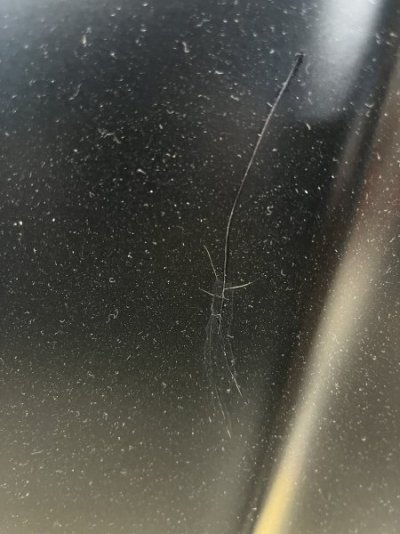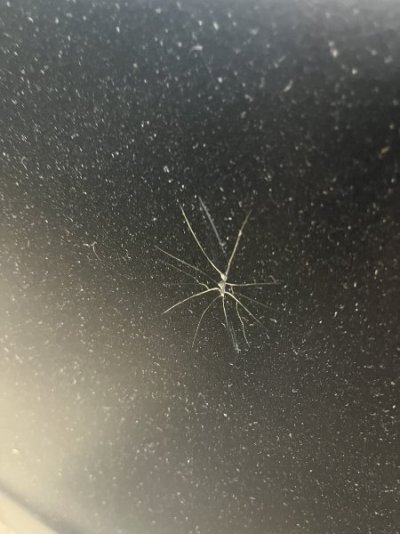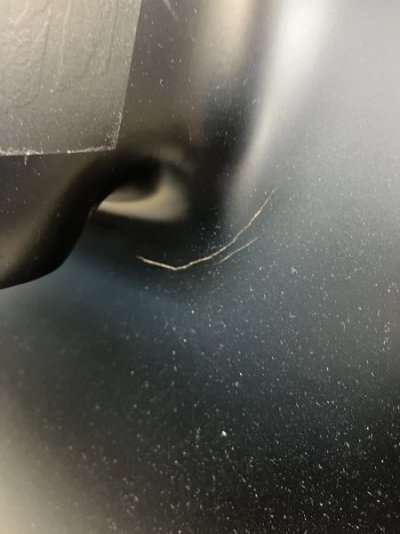You are using an out of date browser. It may not display this or other websites correctly.
You should upgrade or use an alternative browser.
You should upgrade or use an alternative browser.
Is it hard to fix spider cracks A12 hood?
- Thread starter koosh
- Start date
radical rob
Well-Known Member
Not hard but can get a bit smelly and dusty.
PurpleBeeper
Well-Known Member
I would just handle it like a mother nor bodywork repair on fiberglass. Sand area to remove crack, filler, sand, paint
In the day you really had to get them out so they wouldn’t come back and then had to worry about “whicking” where the fiberglsss strands would draw the fill and primer in but more so the primer. Maybe nowadays the polyester primers and epoxies have solved that. They don’t look to bad and should be an easy fix for you or a bodyman. Good luckIs it difficult to fix spider cracks (see pics) and then paint hood?View attachment 1750865View attachment 1750866View attachment 1750867View attachment 1750868
sam dupont
Well-Known Member
Is the car original? As someone who makes their living, selling collectibles and antiques, I would rather see original with cracks, than restored. A crack is something that could've happened day two, and is almost expected on a 50 year old car with a plastic hood that is handled that much. As a buyer, I would rather see the crack and decide for myself, whether or not to fix it because you don't know what's underneath somebody else's fix. As long as there are no structural issues, I say leave it.
koosh
Well-Known Member
Not original A12… but original SuperBee. Trying to get to look primo for selling blockIs the car original? As someone who makes their living, selling collectibles and antiques, I would rather see original with cracks, than restored. A crack is something that could've happened day two, and is almost expected on a 50 year old car with a plastic hood that is handled that much. As a buyer, I would rather see the crack and decide for myself, whether or not to fix it because you don't know what's underneath somebody else's fix. As long as there are no structural issues, I say leave it.
sam dupont
Well-Known Member
Carry on. Get out the Dremel tool with a disc and kitty hair fiberglas filler. Trace the cracks without going through the panel.
Cracks like that are caused by the underlying glass structure. They can be tough to fix properly. But what you're looking at are cracks in the top layer of gelcoat. Not a repair that's typically done with bondo. The best option would be to grind the areas just down to the underlying 'glass and brush on gelcoat to the necessary thickness to be sanded level. Then prime and paint the whole hood. The gelcoat is generally only around ten or twenty thou thick.
Another trick is to rub baking soda into the cracks and then saturate them with crazy glue - even the cheap dollar store stuff is fine. Sand smooth when hard.
Another trick is to rub baking soda into the cracks and then saturate them with crazy glue - even the cheap dollar store stuff is fine. Sand smooth when hard.
koosh
Well-Known Member
Interesting! ThanksCracks like that are caused by the underlying glass structure. They can be tough to fix properly. But what you're looking at are cracks in the top layer of gelcoat. Not a repair that's typically done with bondo. The best option would be to grind the areas just down to the underlying 'glass and brush on gelcoat to the necessary thickness to be sanded level. Then prime and paint the whole hood. The gelcoat is generally only around ten or twenty thou thick.
Another trick is to rub baking soda into the cracks and then saturate them with crazy glue - even the cheap dollar store stuff is fine. Sand smooth when hard.
Usually, cracks are caused by stress, but can be caused through shrinkage. Fiberglass likes to be cured at a proper temperature, not always possible. Gell coat is used to generally fill in tight spots that fiberglass doesn't want to lay down into. It has no strength and likes to crack from flexing. I think these hoods are probably made with polyester resin, not the best, but it is what it is. Vinylesther resin would have been best for a part in a hot or heated area. Usually to stop a crack, you dig the area half or more through, glass it back and then go in from the other side and dig back to the new glass that you just did. This isn't always possible, because in the case of a hood, it probably has a reinforcement panel bonded to it.
All of this is hard to convey in print, methods of how to repair/ or lay up fiberglass properly. People have asked on sites why we don't have how to for painting. It's just exhausting to even think about how you can cram years of a skill into one paragraph.
Unless you address the cause of the stress, it will crack again.
All of this is hard to convey in print, methods of how to repair/ or lay up fiberglass properly. People have asked on sites why we don't have how to for painting. It's just exhausting to even think about how you can cram years of a skill into one paragraph.
Unless you address the cause of the stress, it will crack again.
Similar threads
- Replies
- 3
- Views
- 1K
- Replies
- 27
- Views
- 2K
- Locked
- Replies
- 0
- Views
- 603
- Replies
- 2
- Views
- 841




















